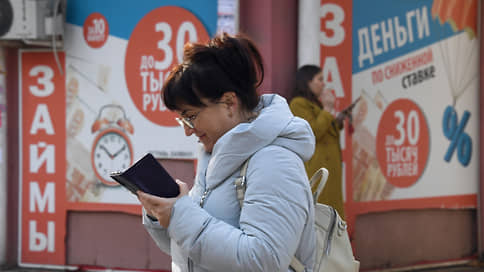MFIs included in banking groups lead in terms of issuing loans

In the fourth quarter of 2024, the volume of issuance of microfinance organizations (MFIs) included in banking groups reached the maximum from October -December 2023 and seriously exceeded the indicators of illegal MFIs. According to experts, this is due to more affordable funding, as well as a focus on POS-music.
According to the results of the fourth quarter of 2024, the volume of issuing bank MFIs increased by about 52% relative to the previous quarter and amounted to 307 billion rubles, it follows from data Central Bank. This is the maximum result from the fourth quarter of 2023. At the same time, the indicators of ordinary MFIs for October – last year amounted to 197 billion rubles, which is almost 56% less than that of banking players.
Many banks have MFIs. In particular, the groups of the OTP-Bank and T-Bank include the largest microfinance companies (IFC)-OTP-Finance and T-Finance. In addition, the MFI markets operate microcredit companies (MKK) “A Money” by Alfa-Bank, RS Credit, Rosbank, “Fast purchases” of the Skokombank, “SKB Finance” Sinara, Uralsib Finas, Uralsiba, Russian Standard Finance, Russian Standard Bank, Expobank Kashdrave MFC.
The leading growth of banking microfinance organizations compared to other MFIs is largely associated with more affordable funding, since most of them attract funds within the group, including bank lending, which allows you to quickly increase the volume of extraditions, explain to the Central Bank.
Interest rates for banking MFI loans for most products are lower than a quarter lower than that of the rest of the companies in the market, which makes them more attractive to citizens, the regulator notes.
The “A Money” service is funded by the Bank for Fondting Headquarters, similar to those used for other corporate clients with a comparable level of credit risk, says Oleg Grishin CEO. In the OTP-Bank and T-Bank, they refused to comment. According to the reports for nine months of 2024, bank loans rates for OTP-Finance were 13% per annum, for T-Finance-6.5–9.9% per annum. In other largest IFCs, according to their reports, in the same period, the rates for attracted bank loans were 19.5–24% per annum.
The growth of banking MFIs can be associated with the focus on the POS-tops. This segment demonstrates active growth. According to Olesya Kiseleva, managing director of the Lim-Zaim IIA, such loans have a lower interest rate and are often provided under the seller’s guarantee, are less subject to regulatory pressure.
The microfinance market is extremely attractive to banks. “Work with its own MFI allows the bank to create a more flexible ecosystem, as well as save customers in the bank of the bank,” explains Mr. Grishin. In addition, according to him, such a partnership has a significant economic benefit: customer satisfaction, loyalty, operating and investment costs are increased. In addition, MFIs for banks are a landfill for fintech-experiments where you can test different models with minimal losses (see. « Kommersant » of November 19, 2024).
Against the backdrop of high interest of banks in the segment, the competition between banking and classic MFIs worsened.
According to the MIR SRO, as of the end of 2024, banking MFIs account for almost 45% against 35% a year earlier, the growth of 10 p. “Banking structures have several advantages: they have access to cheaper funding, strong IT solutions and the ability to integrate their products into the ecosystem of banking services, which allowed them to aggressively increase the volume of issues, Recognizes the director of the IFC « Migkredit »? Alexander Melnikov. – But classic MFIs also have their advantages. They have more flexibility in decision -making, adapt faster to changes, can work with a wider range of borrowers … Bank structures are often limited by rigid algorithms. ”
Competition will continue to grow, experts are sure. “In my opinion, the trends of the last quarter of 2024 will continue in 2025,” says Maria Kopylovskaya, director of the Risk Department of the IIA Mani IIO. The weakest market participants probably will not withstand pressure and either close, or go into gray schemes, concludes Mr. Melnikov.





:format(webp)/s3/static.nrc.nl/bvhw/files/2023/05/data98607874-e1791d.jpg)

